Contents
Description
This is a ray-finned fish from the pangasius catfish family. It is originally from Vietnam, where people raised and eat fish for two millennia. The pangasius fishery is economically profitable due to its fairly large consumption. It is widespread and bred in aquariums.
Usually, you may find fish fillets in the supermarket. Pangasius has black or dark gray fins and six branched dorsal fins-rays. Juveniles have a black stripe along the lateral line and another stripe of the same kind. But the older, large individuals are uniformly gray. On average, the fish peaks at 130 cm and 44 kg (the highest recorded weight is 292 kg).
What does pangwasius eat?
Pangasius is omnivorous, eats fruits, plant foods, fish, shellfish. In English-speaking countries, this fish has the name “shark catfish.” Pangasius is also called “channel catfish,” as it lives in the channels of the Mekong, that is, in artificial and natural river channels.
Pangasius fish farms are mostly located in the Mekong Delta, a densely populated Vietnamese region. It is not easy to call the waters of fish farms clean: they receive industrial waste and sewage. Besides, chemical additives are popular to accelerate the growth of pangasius. Specialists of the sanitary services have repeatedly revealed an increased content of anaerobic and aerobic microorganisms and Escherichia coli in fish fillets.
Therefore, in recent years, a lot of information has appeared about the dangers of pangasius in connection with the methods of its breeding and transportation to importing countries, of which there are more than 140. Among them are the United States, Russia, some countries of Southeast Asia, and Europe.
Calorie content
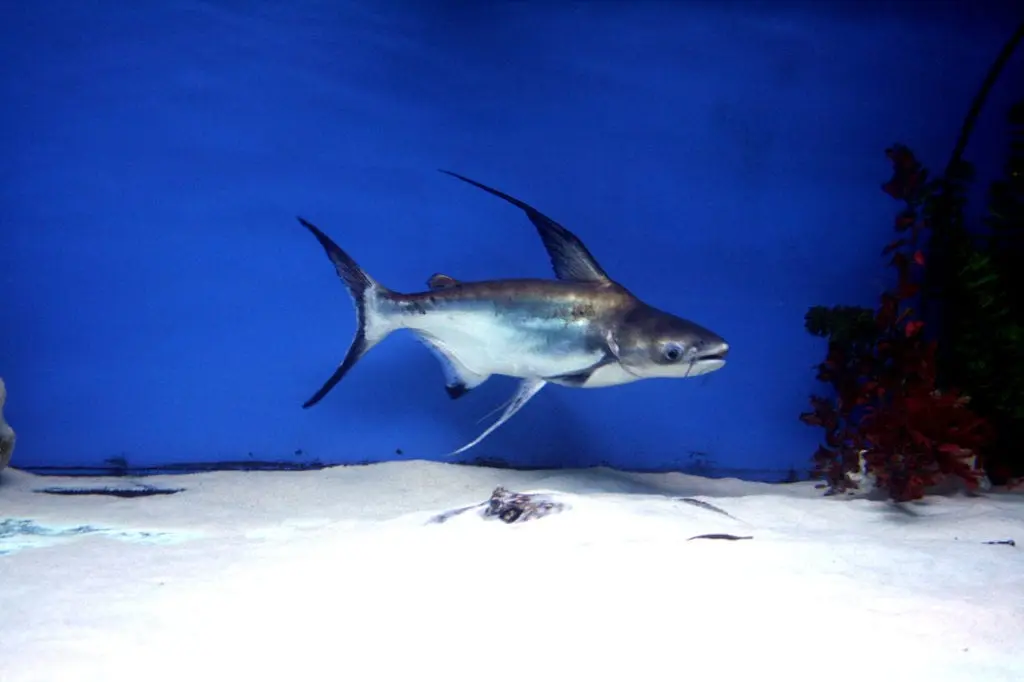
The calorie content of 100 grams of pangasius is only 89 kcal.
Nutritional value per 100 grams:
- Protein, 15.2 g
- Fat, 2.9g
- Carbohydrates, – gr
- Ash, – gr
- Water, 60 gr
- Calorie content, 89 kcal
Interesting to know:
Pangasius is cut and vacuum packed most often in Vietnam. Moreover, all the work is done manually. The fish carcass they free from bones and skin. Remoove the fat in a special way, the method has acquired the name trimming. Then the finished fillet they pack and freeze. To prevent the product from weathering, they cover it with a thin layer of ice. This procedure has acquired the name glazing.
Benefit for health
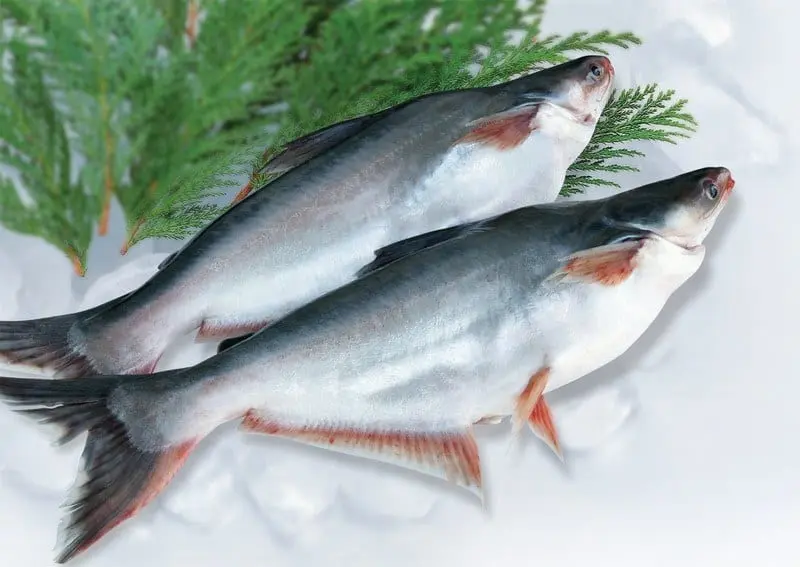
Like all other fish, pangasius is good for health, since it contains the most valuable elements for the body. If it grows in clean environmental conditions, then it contains a lot of vitamins, for example:
- A;
- B vitamins (B1, B2, B3, B6, B9);
- С;
- E;
- PP.
- The pangasius fish contains:
- Sulfur;
- Potassium;
- Iron;
- Magnesium;
- Calcium;
- Sodium;
- Phosphorus;
- Fluorine;
- Chromium;
- Zinc.
Important:
Unlike other river fish, pangasius is rich in Omega3 fatty acids. It also contains a lot of protein, which is easily absorbed in the body.
The high content of trace elements in pangasius helps to improve the functions of the heart and vascular system and prevent the possible development of heart disease. Calcium helps to strengthen bones, joints and normalize the functions of the musculoskeletal system.
Fish also contains fatty acids that increase the elasticity of blood vessels, which is considered excellent prevention of the development of osteoporosis and atherosclerosis. Mineral components can normalize brain activity and improve memory. Vitamins help improve the skin condition, a complex of minerals – to normalize blood pressure.
Besides, with the help of organic acids in pangasius, you can strengthen eyesight, eliminate brittle nails, and prevent even severe hair loss. Antioxidants help bind free radicals, preventing early tissue and cell aging.
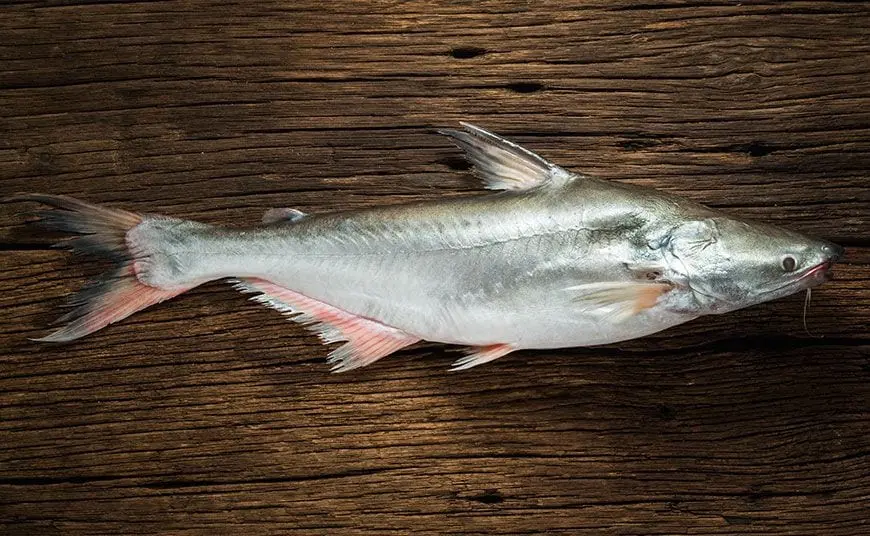
The greatest benefit is pangasius, which grew in natural conditions and not on farms because of antibiotics added to increase growth and growth accelerators and many other chemical components that accumulate in meat.
Nutritionists believe that regular consumption of fish helps to cope with stress more successfully, improve sleep quality and relieve chronic fatigue.
Dangerous properties of pangasius
Pangasius is, generally, a healthy fish. Therefore, the potential risks associates with the consumption of this product relate to general warnings in the field of fishery products. Negative effects on the body are observed when eating pangasius grown in unfavorable ecological water bodies without observing the necessary safety measures and using chemicals and low-grade feed.
Fish that meets the standards and has certificates of conformity can be harmful only in individual intolerance to seafood and fish, severe gastrointestinal diseases (the prohibition is imposed only by a doctor).
Pangasius is no better or worse than other farm fish. You can eat it, and it is definitely not worse than any “farm” chicken, which is “from the heart” stuffed with antibiotics.
If you decide to buy pangasius, then you heed the advice:
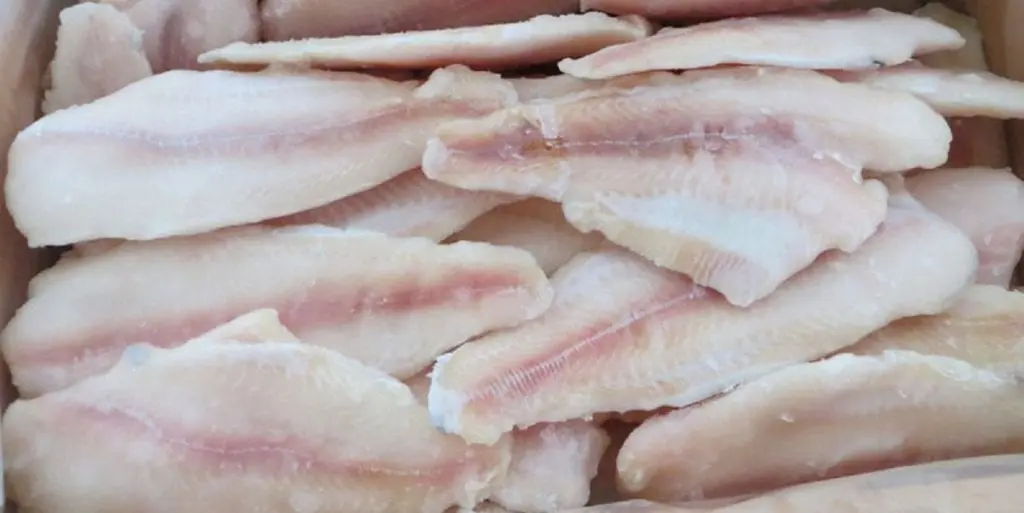
Never take fillets. Since all fillets are injected with a special compound during production. Why do they do this? For weight gain, of course. Although manufacturers claim that these chemicals are harmless, it is unlikely that anyone would want to use them, besides, for their own money.
Also, to increase the mass, there is the so-called glazing, in which frozen fish is covered with a crust of ice. Glazing is only good if it has a thin crust that protects the product from chapping, but many manufacturers abuse it and bring the percentage of water up to 30%.
Choose a steak or carcass. It is impossible to inject a steak or carcass according to the production technology. Therefore, the product matches the price. Estimate the amount of ice with a glance. Remember, if the fish is more expensive, it is of better quality. The carcass must not have the humerus. The steak should be appetizing and easy to grill. It takes on a pleasant appearance when the fish is cut after freezing.
Pangasius baked in the oven
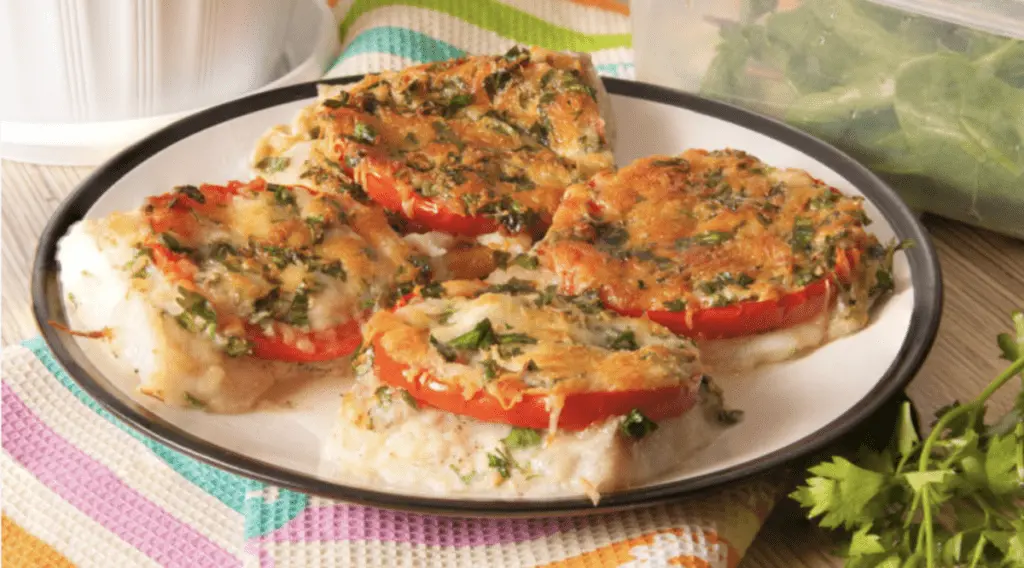
INGREDIENTS:
- Pangasius fillet – 500 g.
- Tomato – 1 pc.
- Cheese – 100 g.
- Parsley – bunch
- Salt, pepper – to taste
Cooking steps
- Rub the suluguni cheese on a fine grater, and chop the parsley. I put everything together and mix.
- Tip: you can use any cheese that melts. cut the tomato into rings
- Cut the tomato into rings.
- Fish lovers will definitely love the simple and quick way of making hake in sour cream sauce in a slow cooker. I cover the baking sheet with paper and grease it with vegetable oil.
- Cover the baking sheet with baking paper and grease with a small amount of vegetable oil. I spread portions of pangasius fillet on parchment.
- Wash the pangasius fillet, dry it with paper towels, and cut it into portions. Spread the fillets on parchment paper, salt, and pepper each piece with black pepper
- Salt fillet and pepper with black pepper to taste.
- Tip: You can also use fish seasoning or your favorite spices, but pepper and salt are enough for me.
- On top of the pangasius fish, I put a piece of tomato.
- Sprinkle tomatoes and fish with grated suluguni and parsley.
- Put the fish in a preheated oven for 25 minutes
- Send pangasius to an oven preheated to 180 degrees for 25 minutes and wait for its preparation.










